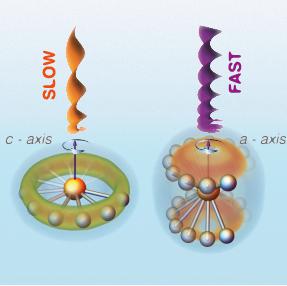Novel procedure for spinning molecules
07 June, 2021
Researchers from the Center for Free-Electron Laser Science (CFEL) at the Deutsches Elektronen-Synchrotron DESY proposed a novel procedure for spinning molecules to tremendously high speeds of several trillion times per second, while keeping control over the axis of their rotation. The results were reported in an article "Controlling rotation in the molecular-frame with in optical centrifuge”, recently published in the Physical Review Research Journal.
Molecules, due to their minuscule size and utterly fast motions, remain elusive from any forms of control utilised in macroscopic objects. However, strong laser pulses can be used in order to steer the orientation of molecules in space, which is, for instance, important for the filming of unobscured images and movies of their structure and dynamics.
Scientists from CFEL introduced a technique which allows to guide the spinning molecules to rotate about a chosen stable axis. This phenomenon has an interesting analogy in everyday world, where one spins an egg to check whether it is hard boiled. When little force is applied to initiate spin, the slowly rotating boiled egg stays on its 'side'. With a greater initial force the egg is going to spin on its 'tip'.
Through accurate quantum-mechanical calculations the researchers predicted that molecules can do a similar thing as the egg, particularly when they interact with corkscrew-like shaped laser light, called an optical centrifuge. By adjusting the rate at which the optical centrifuge pulse accelerates its rotation, one can force the molecule to spin about different axes. A peculiar difference with the spinning egg is that molecules can rotate about their ‘side' and 'tip' at the same time! This effect is known as quantum-rotational coherence. Bringing molecules to such rotational coherences provides a stage for capturing double-angled snapshots of the rotating species, thus enabling access into the molecular frame of reference to retrieve significant amount of information about the molecular dynamics.
